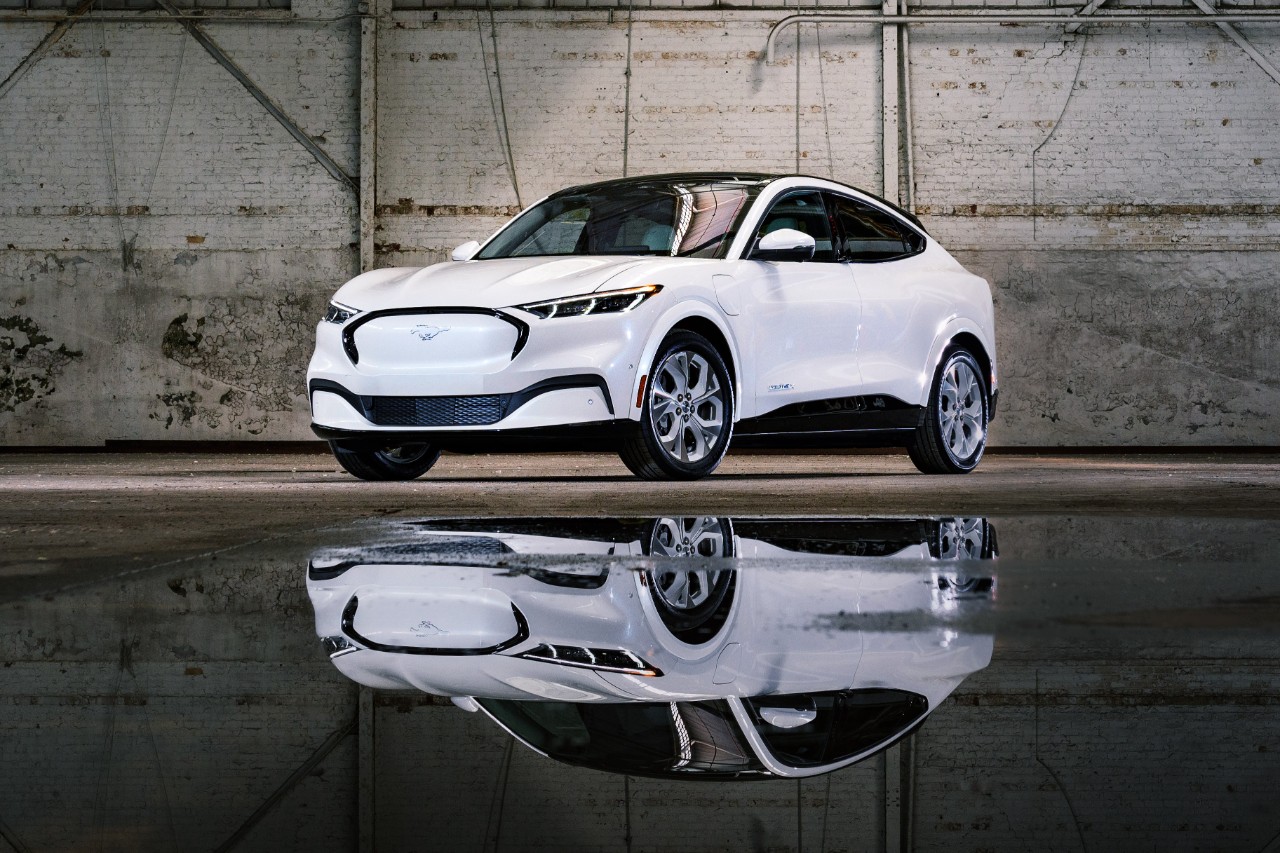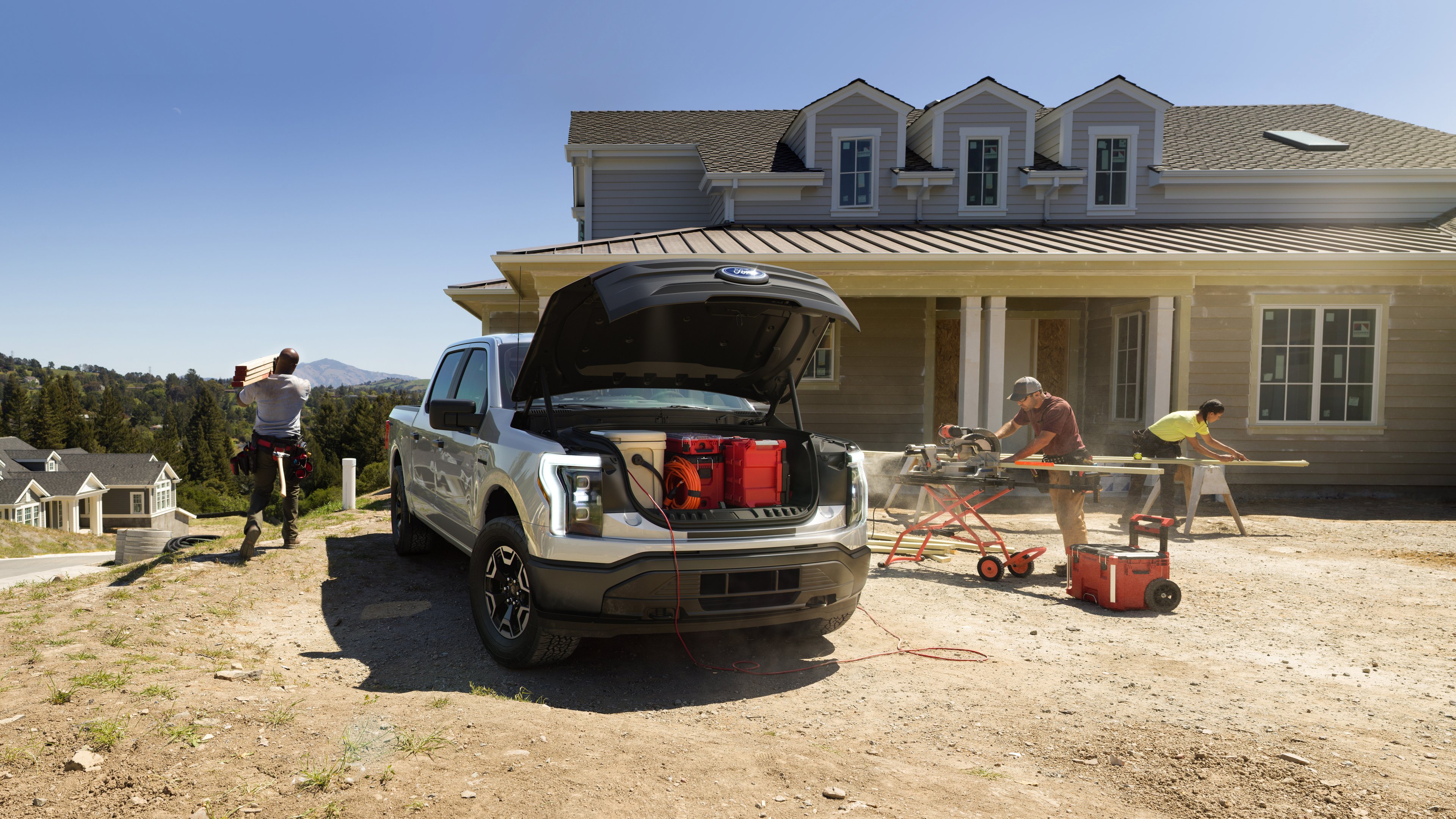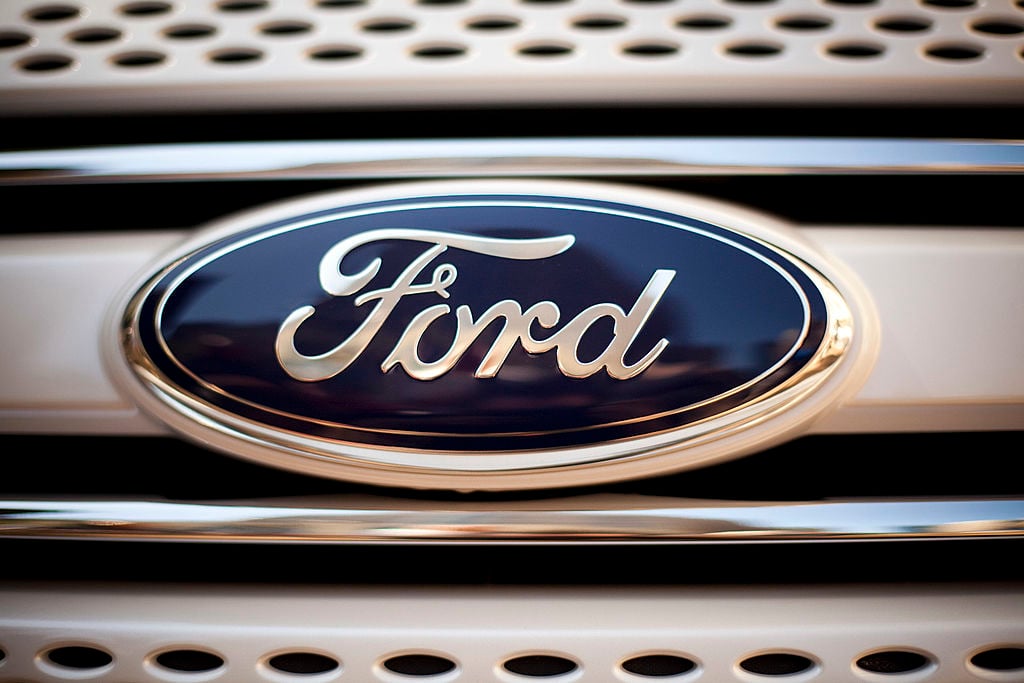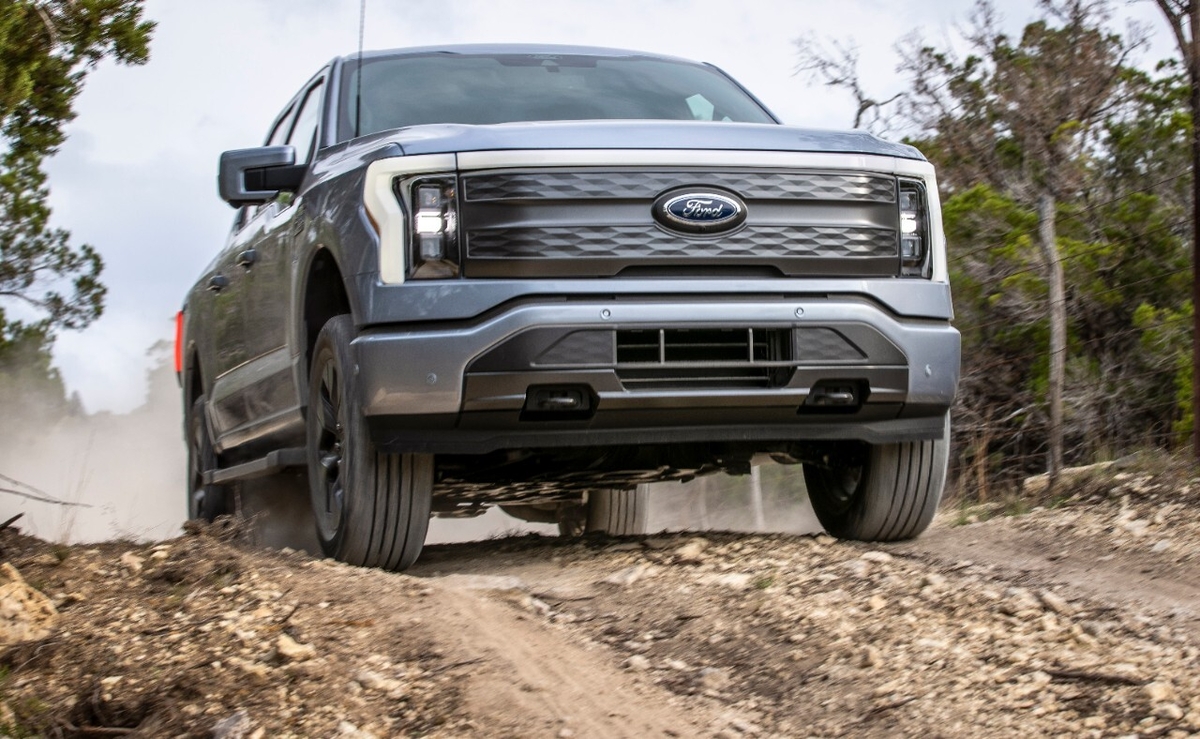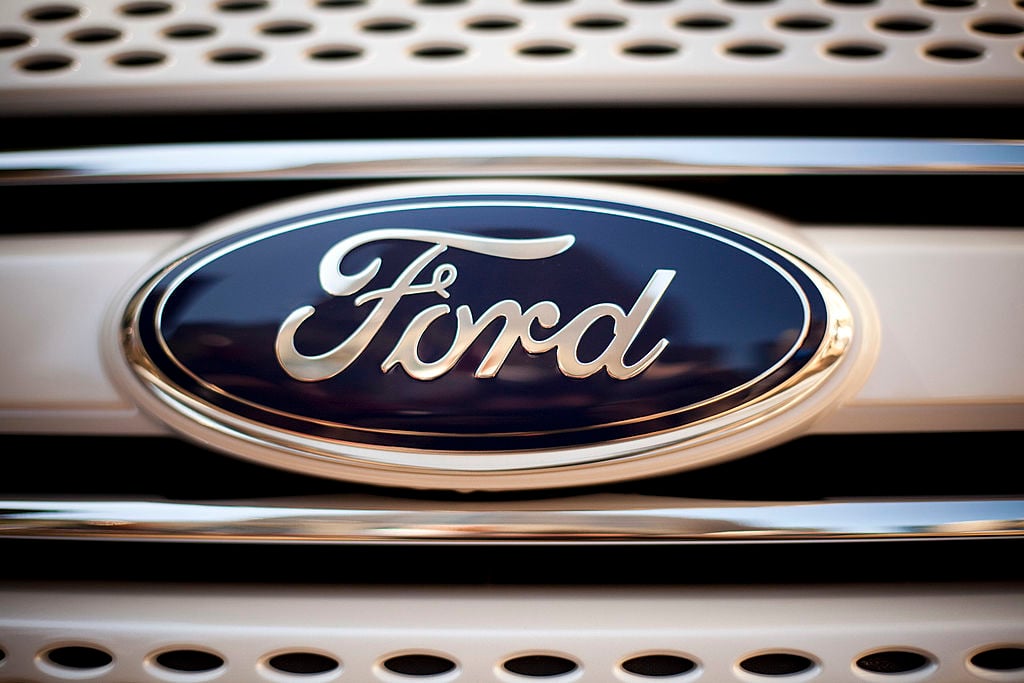
Is this the 2017 Fusion? Image source: Ford Motor Company.
Last week, Ford Motor Company (F 1.25%) released the "teaser" photo above. It's a car that Ford will reveal at the North American International Auto Show in Detroit next month. But what is it?
There has been a lot of speculation. It looks somewhat like a Fusion sedan, but it's apparently a plug-in hybrid or electric car. Is it a new electric model?
I think it's a Fusion. But I think the charging cable is a diversion. I think it's going to turn out to be a substantially revised version of the Fusion that will debut next fall as a 2017 model.
The Fusion's rivals have upped their games recently
The best-selling vehicles in America are pickup trucks. But the best-selling cars are midsize sedans, and the consistent demand and high sales volumes make this a very competitive segment.
In the last few years, the segment's sales charts have been dominated by four models: Toyota's (TM +3.16%) Camry, Honda's(HMC +2.85%) Accord, Nissan's (NSANY +1.36%) Altima, and Ford's Fusion.
The recent history of the Fusion's three big rivals might help us figure out what Ford is likely to be doing. But first, a little primer.
Typically, an automaker will introduce an all-new version of an established model every five to seven years. At some point during that lifecycle, the model will be "refreshed," given an update in hopes of drawing more interested customers.
Usually, generally speaking, the changes made in that "mid-cycle refresh" (as it's called by industry folks) are fairly minor and inexpensive. The front and rear panels might be restyled, some interior pieces changed, and some new technology added -- but most of the vehicle -- its structure and engines and sheet metal -- carries on unchanged.
In recent years, the Camry, Accord, and Altima have all had mid-cycle refreshes. But in all three cases, those refreshes went well beyond the usual new grille and seats, as all three automakers sought to up their games in the face of stiff competition.

Toyota's U.S. brand chief, Bill Fay, and the Camry's chief engineer, Monte Kaehr, posed with the just-revealed 2015 Camry in New York last year. Image source: Toyota.
Toyota's Camry was released in late 2011 as a 2012 model. It sold very well at first, but it was a conservative design that started to slip after Ford's strikingly styled Fusion was revealed just a few months after its debut. Toyota responded by unveiling an aggressive redo for the 2015 model year. The engines and basic structure didn't change, but the body panel except the roof was brand-new, and the entire interior was revamped.

The Honda Accord had a substantial revamp for 2016. Image source: Honda.
The version of Honda's Accord that was first introduced in 2013 has always been well regarded, but like Toyota, Honda felt the need to go beyond the usual when updating the Accord for 2016. The revamped Honda got a new grille and some new high-tech features in the interior, all typical stuff -- but it also got some significant revisions to its structure and suspension. Honda was aiming to make the Accord quieter and smoother-riding, changes that should help the Accord shine with customers making back-to-back test drives of the Honda and its rivals.

Nissan's Altima got new front fenders and a new hood for 2016, along with a completely overhauled interior. Image source: Nissan.
It's a similar story with Nissan's Altima, which was also refreshed for 2016. It got the usual new front and rear end caps, which are relatively inexpensive for an automaker to make. But it also got changes to the hood and front fenders: Sheet metal changes require expensive new stamping dies, a much bigger financial commitment. The 2016 Altima's interior is also heavily revised, with a revamped dashboard (another big expense), new seats, and upgraded materials throughout.

GM North America chief Alan Batey showed off the all-new-for-2016 Chevrolet Malibu in New York this past spring. Image source: General Motors.
There's also a brand-new wild card in this race. General Motors' (GM 2.65%) Chevrolet Malibu hasn't been a contender in recent years -- but an all-new 2016 model looks set to change that in a big way. The old Malibu wasn't a bad car, but it wasn't a great one, and "not great" didn't cut it with buyers who had better choices. The new 2016 Malibu is a much nicer car all around, an instant contender in this tough class.
So given all of the above, what should we expect from the new Fusion?
So what's in store for the 2017 Fusion?
The current version of Ford's Fusion was introduced in 2012 as a 2013 model. It's a global model, sold in Latin America and (as the Ford Mondeo) in Europe and Asia. It was instantly competitive when it first debuted, thanks to a solid structure that made it quiet, smooth, and responsive; a fine interior; and its striking Aston-Martin-inspired styling.

The current Ford Fusion's striking styling has held up well over time, but a major update is likely for 2017. Image source: Ford Motor Company.
But the competition has caught up. Sales have more or less kept pace with rivals' this year, but the Fusion's competitive deficiencies are starting to show. The Ford's back seat isn't nearly as roomy as the Camry's or Accord's (a liability in China, where adults often ride in back), the dash lacks Ford's latest (and best) Sync touchscreen system, and both power and fuel economy could stand to be a bit better. And while that striking styling has worn well, it's now a lot less striking simply because it's so familiar.
So what will Ford do to the 2017 Fusion? Refreshed front-end styling that seeks to renew the drama of the original 2013 model is a given. It could follow the pattern set by the refreshed-for-2017 Escape and other recent Fords. But I also expect a complete interior overhaul, one that addresses the need for more rear-seat legroom and adds the new Sync 3 system. The Fusion is a pretty quiet car right now, but Ford might also add some additional insulation and sealing to reduce noise further and help it feel more luxurious.
I also expect some new engine options -- including, perhaps, Ford's new 245-horsepower 2.0 liter EcoBoost four-cylinder. The Fusion Hybrid and plug-in Fusion Energi should also get incremental fuel-economy and performance improvements.
The upshot: An important Ford looks set for a big update
It's not impossible that Ford has a bigger surprise in mind for us in Detroit. CEO Mark Fields loves auto-show surprises. It's possible that there's an all-electric Fusion or a new high-performance model or something in the works along with the updates we expect.
But I think it's more likely that Ford will devote its presence in Detroit to relaunching its important midsize sedan with some big updates that will help it stay abreast of the fast-moving competition. We'll find out next month.

